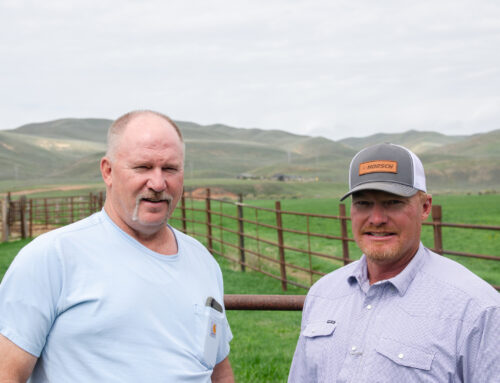As a new Mississippi River bridge moves forward, this rare cypress forest could be in dang
May 29, 2025
Laura Comeaux’s rubber boots squelched in the mire as she trekked through her family land, 128 acres of intermittently flooding forest situated on a sharp bend in the Mississippi River.
Morning light cut a path through the tree canopy of towering bald cypresses, Nuttall’s oaks and red maples and dappled the forest floor. Twittering birds eyed the movement below from high up in the branches.
A little more than three years ago, before the announcement that this land was in the path of a potential site for a new, $2 billion Mississippi River bridge south of Baton Rouge, a day like this would have felt different to Comeaux. It would have been free from the visions of destruction that, these days, accompany every trip into the Plaquemine Point woods.
Javier Gallegos
“It’s like an endless worry,” Comeaux said. “It’s been three years this month that we were invited to the town hall meeting.”
It was that public meeting in 2022 that would turn Comeaux into an environmentalist and protester of what the Louisiana Department of Transportation and Development calls “Option E-11-IV” — one of three potential corridors for a new Mississippi River bridge connecting La. 1 and La. 30.
Residents on both sides of the river are desperate for an additional bridge in the Baton Rouge area, where over 100,000 drivers cross the I-10 Horace Wilkinson Bridge each day, and traffic can back up for hours after an accident.
Yet that demand is in tension with the reality that one bridge placement would likely bisect and partially destroy Plaquemine Point, a river swamp in Iberville Parish that experts have named as one of the last old-growth, naturally regenerating cypress forests in Louisiana.
The destruction would have far-reaching implications, scientists said, contributing to habitat and biodiversity loss, reduced flood control and increased carbon dioxide in the atmosphere.
“You’re going to have a huge impact, not just on the soil, the hydrology and the plants, but the whole community itself from a number of different angles,” Brian Early, state plant community ecologist for the Louisiana Department of Wildlife and Fisheries, said. “That’s something that DOTD has not really homed in on or addressed.”
DOTD has maintained that all three placement options carry environmental and economic consequences.
Alternatives would disrupt existing infrastructure and pipelines owned by Shintech, a leading global producer of polyvinyl chloride — and a major employer in Iberville and West Baton Rouge Parish, employing about 700 direct employees and 800 nested contractors at its Plaquemine and Addis sites.
The corridor containing the cypress forest would also intersect with Shintech property; however, that land is currently undeveloped, the company said.
Though DOTD identified Shintech as an important stakeholder and in emails expressed a desire to minimize effects on its property, DOTD officials said they do not favor any particular location.
“At the end of the day, there are going to be impacts — adverse impacts — to somebody from the delivery of this project,” DOTD Secretary Joe Donahue said. “I think that the Comeauxs have done a great job of making their concerns known, of promoting the benefits of Plaquemine Point. Where that ends up shaking out in the impacts to the other alternatives is yet to be determined.”
A vanishing ecosystem
As Comeaux forged deeper into the forest, she identified the bald cypress trees, from young saplings to giant, mature cypresses in the range of 220–360-years old.
Many of the oldest trees predate the Louisiana Purchase, earning a section of Comeaux’s land a special “Alive in 1803” designation from the Louisiana Purchase Cypress Legacy network. Multiple trees existed before the founding of the United States.
Javier Gallegos
The LSU environmental sciences department also distinguished the area as a naturally regenerating cypress forest. This type of ecosystem is rapidly disappearing in Louisiana.
The vast majority of cypress forests in the state are “ghost” or “emerging ghost forests,” said LSU environmental sciences professor Linda Hooper-Bùi. Ghost forests are common along the coast as saltwater advances into freshwater systems and kills trees over time.
That’s why Hooper-Bùi and her students were shocked to find the thriving old-growth forest tucked away in Sunshine, Louisiana. Hooper-Bùi said she has never seen one like it in over 10 years of studying this environment.
Beyond symbolizing Louisiana’s natural heritage, old-growth cypress forests shape the lives of the state’s present-day inhabitants. The trees mitigate flooding and absorb carbon dioxide. A 100-year-old cypress will drink 700 gallons of water a day, according to Hooper-Bùi.
“You take those trees out, those houses are going to flood,” Hooper-Bùi said.
DOTD officials did not specify to what extent the placement would harm the forest, such as acreage or how many trees would be cut down.
The agency acknowledged that the clearing would include a stretch of Comeaux’s woods belonging to the A.E. LeBlanc Natural Area and Old-Growth Cypress Forest, where the most aged trees are concentrated.
“It’s really sad that the richest, oldest, more biodiverse area of our forest is the one that will be impacted,” Comeaux said.
Bridge would be ‘vital artery’
These expeditions into the forest have become an almost weekly routine for Comeaux. Recently, when the water was high, she arranged a tour for the DOTD officials. Her husband Cliff pulled the party through the sloughs in pirogues.
DOTD recognizes the uniqueness of the forest, Donahue said. Project leaders are gathering as many perspectives as they can, he said, before presenting a preferred location to the Federal Highway Administration.
Javier Gallegos
“All projects have impacts,” Donahue said. “That’s a very broad statement, but I feel comfortable making it.”
The bridge project, estimated to cost $2 billion, will soon enter into an environmental review under the National Environmental Policy Act. DOTD is pursuing an environmental assessment, which determines whether an infrastructure project will have significant environmental impacts.
Opponents of the corridor bisecting Plaquemine Point have argued a more rigorous and time-consuming review, called an environmental impact statement, is necessary in this case.
If the environmental review goes as planned, the earliest a new Mississippi River bridge could open to traffic is 2033, DOTD officials said.
“I would say that this bridge, out of all the state’s mega projects, it has the most funding that’s dedicated to it right now,” Donahue said. “It’s in the best position financially to be advanced to construction.”
If realized, the bridge would be a boon to Iberville, a rural parish along the river with a declining population and a workforce that must take the Plaquemine-Sunshine Ferry or travel about 12 miles north to the Horace Wilkinson Bridge to cross to the East Bank. During high traffic, the commute can last over an hour.
The lack of a bridge has stunted the parish’s economic growth and mobility, Iberville Parish President Chris Daigle said.
“It is going to be a vital artery for the whole region,” Daigle said.
DOTD closes in on location
Representatives for DOTD said they are studying each option in depth for environmental impact.
“All three of the alternatives are equally feasible,” Donahue said.
In an interview with the agency, one DOTD official said the placement through the river swamp is “winning the race, but we still got a ways to go.” Donahue pushed back on that assessment.
“I would argue that it’s not even winning the race,” he said. “It made it the cut.”
Emails sent by a consultant for DOTD and obtained by The Advocate referenced ongoing conversations with the chemical Shintech as the state considered locations.
“As mentioned previously, we would like to further conversations with Shintech as an important Stakeholder to the project, particularly to assist in avoidance/minimization of potential impacts to property,” Kara Moree of the Atlas consulting firm wrote in August 2022 to Danny Cedotal, Shintech Louisiana’s vice president of manufacturing.
Regarding this communication, DOTD reiterated that it has no preference for a particular bridge placement and emphasized that Shintech owns property on all three alignments.
In a statement, Shintech indicated the Plaquemine Point corridor would be the least detrimental to the company’s operations. The company will continue working with the state as plans progress, it said.
“The F-13-IV and F-14-V locations potentially impact existing electrical and utility infrastructure and pipelines in their designated areas,” Cedotal said in the statement. “The E-11-IV location crosses currently undeveloped Shintech property.”
A forest in waiting
All around Comeaux, the forest turned itself over. A fallen willow tree served as a nurse log for seedlings, providing rich organic matter to nourish the next generation. Fragments of crawfish shell mingled with the soil — evidence of a recent meal, and a microcosm of the streamlined exchange of energy within the forest.
The scientists who studied the forest say no restoration effort or mitigation banking can recreate the efficiency and complexity of a longstanding, naturally regenerating ecosystem. Restored or degraded environments are “leaky systems,” Early said.
“The way in which we develop and use habitats and impair them will come back on us significantly, in many ways,” Early said. “Some we won’t see in our lifetime, but others we will.”
As morning turned to afternoon, Comeaux reached her destination: the A.E. LeBlanc Natural Area, the 60-acre cypress refuge home to the most mature trees.
“I would say most of what we’re standing on is going to be wiped out,” she said.
Still, that day hadn’t arrived, if it ever does. At this moment, Comeaux appreciated the liveliness of the forest, pointing out caterpillars, frogs and rare flowers as she walked. Her husband imitated the call of barred owl staring down at them.
As the couple started toward home, the owl called back.
Search
RECENT PRESS RELEASES
Related Post



